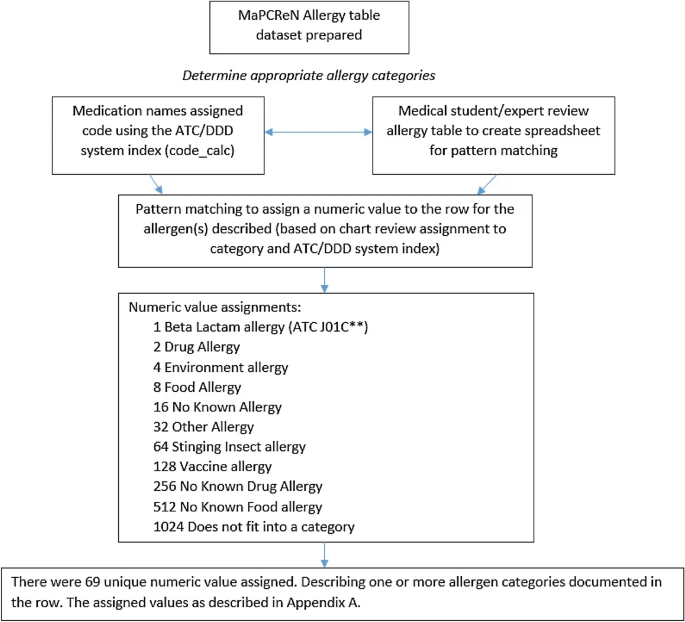- Short Report
- Open Access
Allergy, Asthma & Clinical Immunology 17, Article number: 85 (2021)
Abstract:
Background: Leveraging the data management resources of the Canadian Primary Care Sentinel Surveillance Network (CPCSSN) is a viable approach for describing the prevalence of allergic disease documented in primary care settings.
Methods: The dataset used for this study was inclusive of data from EMR initiation up to Dec 31st 2018. The sample included 1235 primary care providers representing 1,556,472 patients across Canada.
Results: In total, there were 536,005 patients with a documented allergy that fit into one of the 10 suggested categories. The allergy table includes 718,032 distinct entries representing 564,242 unique patients, which is 36.3% of the patients within the CPCSSN repository. The most common allergies recorded were drug allergy (39.0%), beta-lactam allergy (14.4%), environmental allergy (11.0%), and food allergy (8.0%). Anticipated upcoming studies include physician-documented drug allergy with a focus on beta-lactam allergy, as well as stinging insect allergy, among others. To our knowledge, these will also be the first such prevalence studies of primary care physician-documented allergic disease done in Canada.
Interpretation: The CPCSSN dataset represents electronic medical records from 1.5 million patients across Canada including documentation of allergic diseases. This dataset provides a national representative population to describe and characterize Canadian patients with common allergic conditions. This robust dataset provides the opportunity for health surveillance, and in particular data to explore the impact of allergic disease on primary care practice.

No comments:
Post a Comment